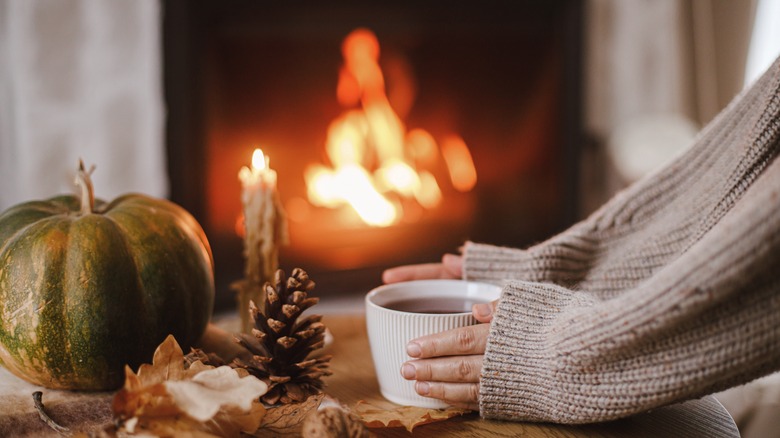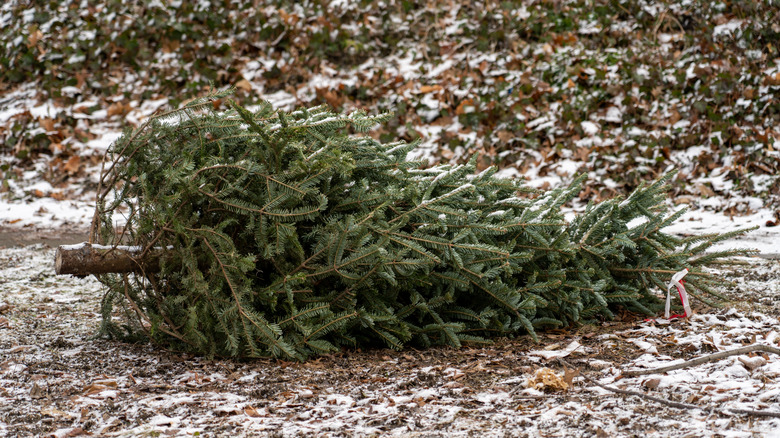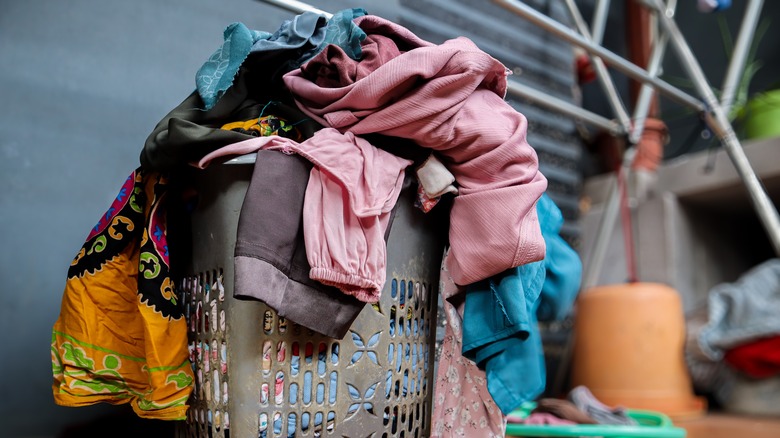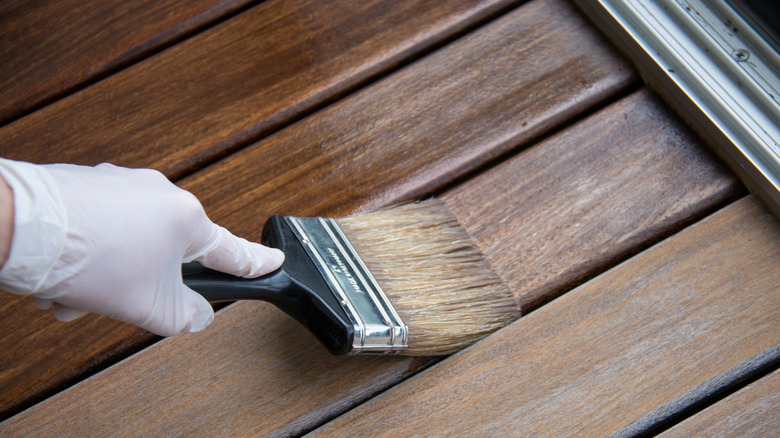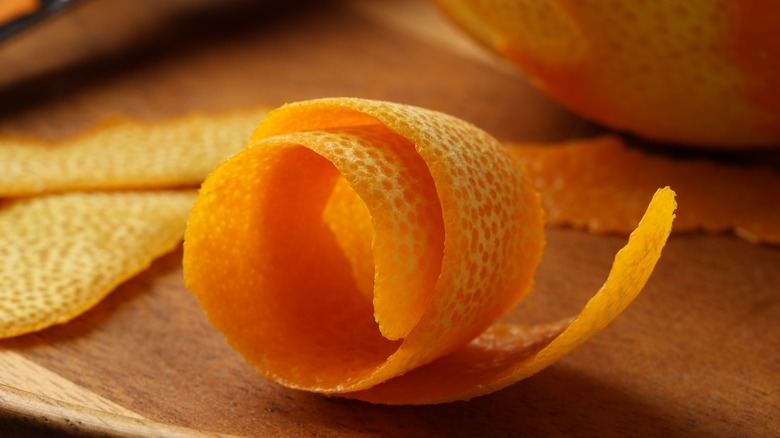10 Things To Avoid Burning In Your Fireplace At All Costs
Temperatures are dropping, and there's no better time to cozy up in front of the fireplace. That means it's also time to talk about fire safety. Many people are tempted to burn all kinds of household materials in their fireplaces. They seem innocent enough, and burning them is cheap and easy. Unfortunately, burning improper materials is one of the biggest fireplace mistakes you can make.
Each of these materials carries its own health and safety risks. Fabrics, for example, can give off unpleasant odors and toxic fumes. Fire accelerants, like lighter fluid, are great for getting your grill started. Use them in your fireplace, though, and you risk a chimney or house fire. The only truly safe thing to burn in your fireplace is seasoned firewood that you've either purchased or cut yourself and dried. If you want to prioritize your safety this winter, avoid burning these 10 things in your fireplace at all costs.
Plastics
Your fireplace might be one of the worst places to dispose of your plastic waste. When burned, plastics release several harmful chemicals into the air, such as hydrochloric acid, sulfur dioxide, and heavy metals. Inhaling these chemicals can cause headaches, breathing issues, and even cancer. In addition to the toxic fumes released into your home, plastics burned in the fireplace release the same fumes through the chimney, causing environmental harm.
Paper
Aside from using a little newspaper to get a fire started, you should never burn paper in your fireplace. Paper, especially colored or plastic-coated paper, releases toxic fumes when burned. Paper also ignites very quickly. If flames go up the chimney, they could ignite creosote and start a dangerous chimney fire. Creosote is a flammable, tar-like substance. While you shouldn't let creosote accumulate, it is inevitable in wood-burning fireplaces. It's better to be safe than sorry.
Christmas trees
You should be able to use your Christmas tree as firewood, right? Unfortunately, no. Real Christmas trees, wreaths, and other evergreen foliage contain resin, which burns very quickly and produces popping embers. These embers could rise into the chimney and ignite creosote deposits. They could also carry up through the chimney and onto your roof, which is a recipe for disaster. Remember to dispose of your Christmas trees and wreaths properly this year and only use seasoned firewood in your fireplace.
Fabrics
There's really no benefit to using the fireplace to dispose of your unwanted clothes and linens. Fabrics produce an abundance of smoke and soot, adding to the buildup of creosote in your chimney. They also burn very hot, further increasing the risk of a chimney fire. Because many modern fabrics, like polyester, are made from plastics, burning them carries the same risks as burning other plastic products. Fabrics can also give off an unpleasant smell when burned.
Fire accelerants
It might be tempting to use a fire accelerant to quickly light your fireplace, but don't do it. Fire accelerants, like kerosene, gasoline, and lighter fluid, are unpredictable. Use them in your fireplace, and you risk unexpected flare-ups that could burn you or start a fire in your home. These accelerants often contain petroleum-based chemicals and menthol, which, when burned, produce toxic fumes you don't want in your home.
Treated or coated wood
In the fireplace, not all wood is created equal. Wood that's been stained, painted, or otherwise treated with pesticides or other chemicals should never be burned in the fireplace. When these materials are burned, they release harmful chemicals into the air. Scrap plywood is also dangerous to burn because the adhesives used during manufacturing also emit toxic fumes when burned.
Trash
Burning trash seems innocent and even environmentally friendly. You don't have to take the trash out, and it stays out of the landfill. However, your fireplace should never be treated as a household incinerator. Your trash can is full of hazards, including Styrofoam, plastic, and colored paper. When burned, all of these materials release a cocktail of toxic chemicals. They're bad for your body and the environment, so it's best to dispose of household waste properly.
Dryer lint
Dryer lint is often used to start fires. There are plenty of clever ways to reuse dryer lint around the home, but it shouldn't be burned in the fireplace. Dryer lint accumulates from your clothes and linens, so burning it releases the same chemicals as burning fabric. Dryer lint also generates very high heat, which can cause large and unexpected flare-ups and lead to burns or dangerous chimney fires.
Charcoal
There are several ways to repurpose charcoal around your home and garden, but burning it in your fireplace is not one of them. Charcoal and coal products burn at a temperature above the safe limit of your fireplace. It's ideal for grilling burgers, but it can damage your chimney and flue. These products also emit a higher level of carbon monoxide than firewood. This chemical is deadly when it accumulates in your home.
Fresh fruit peels
The fresh scents of citrus and apple are delicious and festive, but you should refrain from burning fresh fruit peels in your fireplace. The moisture from fresh peels creates excess smoke and creosote in your chimney. If you still want the scent of fresh fruit, it is safe to dry fruit peels in the oven at a low temperature before burning them in your fireplace. That way, you can enjoy fresh scents without the risk.
